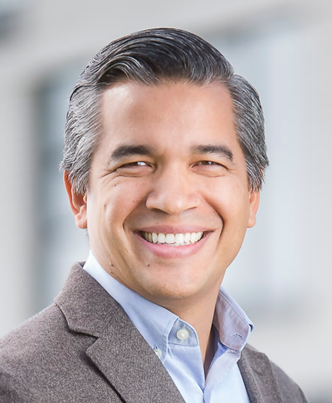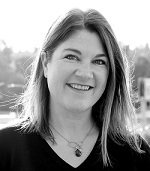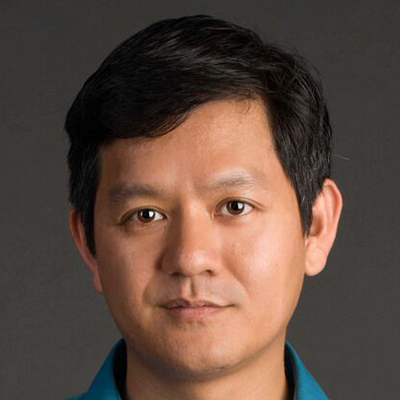Philanthropy Northwest shared more than 180 stories with you on our blog in 2016, including interviews with leaders in the field, member news, public policy updates, program highlights, emerging trends and tools for effective philanthropy.
These 12 blog posts captured our network's attention the first time around. In case you missed them, now's great time to catch up!
- Ballmer Family Joins $1B Grantmaking Partnership for Youth
Ballmer Family Giving, the youth-focused philanthropy organization representing former Microsoft CEO Steve Ballmer and his wife Connie, has joined a funding partnership that aims to award $1 billion in grants to high-performing charities that serve low-income youth. The new collaborative, Blue Meridian Partners, is led by the New York-based Edna McConnell Clark Foundation.

Bonta What We Can Do About Environmental Philanthropy's White Privilege
Marcelo Bonta, Momentum Fellow, Meyer Memorial Trust | Environmental philanthropy has a big problem. It’s not our lack of racial diversity, especially at the executive and trustee level. It’s not the lack of funding directed towards organizations led by people of color. It’s not the lack of funding for diversity, equity and inclusion efforts, despite many foundations now talking about it. It’s not the lack of investment in established leaders of color and a professional pipeline for emerging leaders of color. It’s not the underfunding of general support and capacity-building. It’s not the assumption that people of color don’t care about the environment; it’s not the lack of acknowledgement that people of color support environmental issues at higher rates than whites. It’s not the hiring of average white men instead of overqualified people of color. All those are simply the byproducts of the big problem: white privilege. And until environmental philanthropy acknowledges and successfully addresses its white privilege, sadly, our planet will continue to suffer.Equity in Grantmaking: Walking the Walk
Marcelo Bonta, Momentum Fellow, Meyer Memorial Trust | Pursuit of equity in grantmaking is the reason I joined the Momentum Fellowship. It’s a priority of the fellows, it’s a priority of Philanthropy Northwest and it’s a priority for Meyer Memorial Trust — the Oregon foundation hosting me and two other Momentum Fellows for the next 20 months. Overall, my experience has exceeded my expectations, and I feel that I have been set up for success, which leads me to the following question: Why is Meyer succeeding at diversity, equity and inclusion? And what can other organizations learn from this example?Nine Predictions for Philanthropy in 2016
Jeff Clarke, CEO, Philanthropy Northwest | Welcome to 2016! Philanthropy’s core DNA is love for humanity and community. Here in the Pacific Northwest, we celebrate a unique philanthropic culture marked by optimism, generosity, civic engagement and stewardship. It rests upon our nation’s unique commitment to philanthropic freedom and donor intent. But above all, our big, diverse place defines us, from Alaska’s North Slope to southern Oregon, and the Pacific coast to eastern Montana and Wyoming. In other words, as American farmer and writer Wendell Berry observed, “If you don’t know where you are, you don’t know who you are.” Looking ahead to what is sure to be a dynamic year, philanthropy, with its ability to gather people around the public good, is more important than ever.Our Strategy: How and Why We Work
Audrey Haberman, Interim CEO, Philanthropy Northwest | Who knew that a brief discussion about a "refresh" more than a year ago would result in a creative and engaging process culminating in a new strategy? As a staff member who participated in this effort alongside our board, I have been impressed with the thoughtful and honest discussions for crafting a narrative that not only caught up to where we are today, but envisions a future that continues to position us as relevant and responsive. We asked ourselves: Which qualities make philanthropy most effective, at its best? Across our diverse six-state network of nearly 200 philanthropic entities, which key values are shared? How can we deliver value to the sector and what kind of organization do we want to be? Our resulting framework represents an ongoing journey, envisioning Northwest communities with vibrant, healthy futures that honor our past, our people and our cultures.Who's Coming to Our 2016 Conference: Under One Sky
Philanthropists from the Northwest and nationwide flocked to Philanthropy Northwest's annual conference last week. Our conference theme, Under One Sky, reminded us that from Alaska to Wyoming, urban to rural, Natives to newcomers, we remain connected by a greater purpose: our shared commitment to vibrant, equitable and inclusive communities. Together, we explored this theme and celebrated 40 years of collaborative philanthropy.Philanthropy Northwest Welcomes Interim CEO
Philanthropy Northwest's board of directors and staff welcome Audrey Haberman, managing partner of our consulting team, as our interim CEO. A former Philanthropy Northwest board member and foundation executive, Audrey has led The Giving Practice since 2011. She is stepping into the role previously held by Jeff Clarke, who stepped down as CEO earlier this week.
Teunon Can General Operating Support Become the New Normal?
Jennifer Teunon, Executive Director, Medina Foundation | If we make a grant, it’s because we believe in the organization and we want to see the same outcomes they want to see. But we always need to remember that we are investing in their work, not ours. If every funder only pays for a specific program or a specific line item, a nonprofit becomes fragmented and unstable. Without general operating support, an organization doesn’t have the money for staffing, rent, technology, training, or even the phone bill. And, without a strong infrastructure, programs that improve our communities can’t happen.Why Philanthropy Should Care About Black Male Achievement
Dalian Yates, Momentum Fellow, The Oregon Community Foundation | Foundation funding explicitly designated to benefit black men and boys has increased in recent years, rising from $28.6 million in 2010 to nearly $64.6 million in 2012. We must continue this trend. We know what works. However, the majority of philanthropy's work falls outside the framework of a black male initiative or portfolio. As such, work that claims to serve black males but does not make a targeted effort to reach them often works well for every population except black males. I joined Philanthropy Northwest's Momentum Fellowship to do more for a growing movement actively seeking solutions. Here are my five recommendations for the philanthropic sector.
Ellis Home Sweet Home: Working on Equity in Affordable Housing
Sharon Wade Ellis, Momentum Fellow, Meyer Memorial Trust | When I was a kid, I spent summers with my grandparents in their old and drafty home on Chicago's South Side. Old as it was, that home offered refuge, and that garden provided more than nourishment: together, house and garden tied the family closely to their community. They cherished its security and affordability. In the minds of my grandparents, the home and everything associated with it was theirs — but they didn't own it, and therefore knew they could lose it one day. They were lucky. That place — their place — left me with a certainty: everyone has a right to a stable and affordable home. I carry my passion forward to the work I do at Meyer Memorial Trust, finding relief for my nagging ache of wanting to help people access housing that meets their needs.The Importance of Being Rested: Lessons From My Time Away
Lyn Hunter, Senior Program Manager, Philanthropy Northwest | To celebrate my 10th year at Philanthropy Northwest, I had the opportunity to take two months away from the office to reflect and recalibrate. As word got out about my eight-week leave, plenty of advice followed. Write! Travel! Do something! Do nothing! My research also found that, while extended leaves are becoming more common among environmental nonprofits, they're still unusual for most nonprofit and philanthropy organizations. In a sector filled with individuals who give so much of themselves in service to others, I wonder, does it make us feel selfish or guilty to take care of ourselves?
Le Philanthropy WIth Balls: What's Unique About Northwest Funders?
Vu Le, Executive Director, Rainier Valley Corps & Author of Nonprofit With Balls | In the past few months, I have been traveling around the country, speaking with different funders and nonprofit professionals and, when possible, collecting free pens from conference exhibitors for my nonprofit in Seattle, Rainier Valley Corps. Through all the traveling and conversations, I’ve noticed a few differences between Pacific Northwest funders and other funders — some of which are exciting, while others are worrisome. These are all observations from my own perspective, with little formal data behind them and thus subject to biases influenced by the people I’ve talked to and worked with. Please feel free to disagree and push back. I am hoping by discussing what makes Northwest philanthropy unique, we can focus on building on our strengths, minimizing our weaknesses and allowing nonprofits and funders to more effectively reach our goals of building a stronger community.
We welcome contributions from our members and partners to our blog. If you're interested in writing a guest blog post in 2016, contact news@philanthropynw.org.